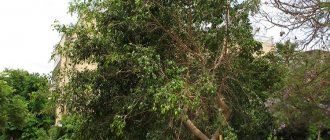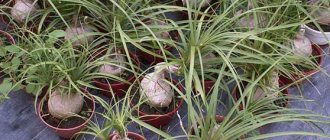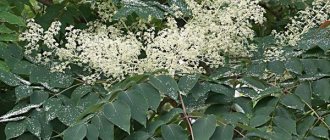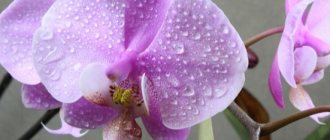To do this, it is not necessary to have a dacha or a personal plot with all the required conditions; you can get by with a window sill.
It is important to create optimal conditions for citrus and follow all the rules for caring for it.
Growing an orange tree at home will not only bring a lot of pleasure and a new experience in gardening, but will also allow you to get an exotic plant that produces delicious fruits.
Is it possible to grow an indoor orange?
Orange can be grown in an apartment both as a decorative flower and as a source of medicinal fruits.
The height of a home tree ranges from 1 m to 2.5 m. The exotic plant has :
- dense foliage, painted bright green;
- branches with light-colored bark;
- pale white flowers;
- fruits that taste no different from store-bought products.
Information ! The tree enters the fruiting phase at 7-8 years of age.
This is what an orange tree looks like at home:
Varieties and types of plants for the home
There are approximately 600 varieties of citrus crops. The most popular varieties suitable for indoor growing include:
- Pavlovsky . The height of the plant is up to 1 m. The variety is characterized by good fruiting, although the fruits ripen for quite a long time - 9 months.
- Gamlin . The height of the tree can reach 1.5 m in height. The fruits have a balanced taste, harmoniously combining sweetness and acidity. Harvesting occurs in late autumn.
- Washington Navel . Plant up to 2 m in height. It attracts attention with its flowering, during which each inflorescence exudes a delicate sweetish aroma. The variety boasts large fruits weighing 300 g.
- Marheulsky . A dwarf tree up to 1.7 m in height, produces large, sweet-tasting fruits with bright orange skin.
It is recommended to choose oranges depending on your taste preferences, since each type is good in its own way.
Types and varieties of oranges: photos and descriptions of plants
The list of orange varieties is replenished annually with 10–15 new ones. According to the timing of fruit ripening, all varieties cultivated in the world are divided into early, mid-early and late. In addition, they differ in the typical color of the fruit (yellow, red). Morphological characteristics such as the shape of the fruit and the surface of the orange skin vary greatly depending on the growing area, soil, and nutrition. All types of orange are divided into sweet, regular and sour.
Orange varieties are divided into three groups:
- the first group - varieties with fruits that are ordinary and familiar in shape and appearance, that is, round, with a beautiful, even skin;
- the second group includes varieties with an underdeveloped fruit (in the form of a navel on top of a developed fruit);
- The third group includes kings - varieties with red flesh and reddish skin.
Varieties of the first group produce fruits of different sizes: from small, weighing 100–120 g, to large, 300–480 g, spherical or oval, with a large number of seeds, characterized by high yield.
Varieties of the second group, often called umbilical, are distinguished by large fruits, reaching 500–600 g, with a characteristic mastoid outgrowth at the top of the fruit (umbilicus), formed by the overgrown base of the ovary column. The orange pulp is dense, slightly crunchy, bright orange in color, with excellent taste and aroma. There are no seeds or few of them.
Varieties of the third group - kinglets - are characterized by short stature and medium-sized fruits (weighing up to 170 g) with bright red and very tasty pulp juice. Kinglets have high quality fruits, but are distinguished by their late ripening. There are few seeds.
These photos show types of oranges that differ in their taste:
Methods
You can grow citrus at home in 2 ways (seeds, cuttings) .
Both methods have both pros and cons. An orange grown from a seed is hardier and stronger than one grown from cuttings. He quickly adapts to new conditions and is not afraid of illness.
Trees that emerged from cuttings fully retain varietal characteristics . The seeds do not have this feature, which is why they develop into a completely different crop with modified taste and shape.
From the seed
Step-by-step instructions for the process of growing a citrus tree from a seed:
- Take a ripe orange without damage or signs of rot and remove several seeds from it.
- It is important to plant the material immediately after removing it from the fruit. The seeds should be placed in small containers with soil mixed with peat.
- It is better to deepen the seeds 1 cm into the substrate. During the germination process, ensure that the soil is constantly moist and the temperature in the room does not drop below 22°C.
- After 2-3 weeks, the first shoots will appear; they must be placed under a glass jar and placed in a well-lit place. Every day, remove the container for 30 minutes to allow the plants to breathe.
- After the formation of 2-3 true leaves, it is important to transplant the sprouts into separate pots, up to 10 cm in diameter, with nutritious soil. In this container, the tree should grow until it reaches 15 cm in height.
With proper planting and care, fruiting occurs in the 8th year.
How to grow an orange from a seed is described in the video:
Cuttings
Propagation of a citrus tree requires the following procedure:
- Using a sharp knife, cut off a shoot with bark and 3-5 leaves up to 10 cm in length and 4-5 mm in diameter. Make the upper cut 5 mm above the bud, and the lower cut below the bud.
- Plant it in a container with sandy soil and cover it with film, creating a greenhouse effect.
- Place the container in a bright place with a temperature of +20-25°C, where direct rays of the sun do not reach. The soil should be slightly moist.
- After a month, the cuttings will take root and can be planted in separate pots. In order not to damage the young roots, the orange must be moistened, carefully removed from the mini greenhouse with a lump of earth and planted in a pot with soil mixture.
An orange from a cutting bears fruit within 4 years.
Seed preparation
Seeds for planting are taken from ripened fruits of good taste. The seeds have a regular shape, typical for this variety, and are full-bodied. You can try planting seeds from several fruits, but of the same variety.
You need to take seeds that have just been extracted from the fruit. Their peel is very dense, and after drying it is practically “impenetrable”; the germination rate of such seeds is as low as possible. After removing the orange seed, you need to:
- extract from the pulp and its remains;
- rinse under the tap;
- soak for at least 8 hours (no more than 12) in water. It is advisable to dilute some fertilizer with vitamins that stimulate growth.
The seeds will sprout well without fertilizers; they can also be dipped in plain water.
Conditions for growth
The necessary conditions for the successful growth of a tree at home are:
- moisture content of the soil mixture, the presence of oxygen in it;
- a certain temperature;
- sufficient lighting;
- suitable pot;
- high-quality soil mixture.
In the absence of at least one factor or its violation, it will not be possible to grow an orange in a pot.
Pot
You need to choose pots that exceed the size of the roots by 3–4 cm . With each transplant you will need a container of larger diameter and height.
When choosing a pot, it is better to give preference to clay containers. Their walls breathe, absorb excess moisture well, and, if necessary, release it back into the soil. You can buy several plastic pots with stepwise increasing sizes.
Priming
The soil mixture must be loose, retain moisture well , contain nutrients, and have a neutral reaction.
You can use purchased soil for planting or make your own soil mixture by taking leaf soil, sand and peat in equal parts.
Lighting
Like all representatives of the subtropical zone, orange trees love light. When there is a lack of lighting, citrus fruits are prone to diseases and refuse to bear fruit, which is why it is recommended to place them on windows facing south, west, and east. To prevent the foliage from suffering from sunburn, it is important to create light shading for it, but the brightness of the lighting should remain at the same level.
Important ! In autumn and winter, when the length of daylight hours decreases, the orange must be illuminated.
Humidity
The humidity level in the room where the tree grows should not be lower than 40% , otherwise the plant will quickly shed its leaves and die.
This is especially common in winter, during the heating season. In this situation, it is important to artificially humidify the air by spraying the plants. An alternative is to use a humidifier placed near the pot with the tree.
Temperature
Orange is a tropical plant that loves warmth:
- the optimal temperature regime in spring and summer is 22-24°C;
- acceptable values in winter are 10-18°C.
At elevated temperatures, the buds fall off and the plant itself slows down . The culture also reacts poorly to drafts and sudden temperature changes.
Planting seeds
If everything is simple with the seeds - soaked and planted, then the ground must be prepared in advance. The easiest way is to buy ready-made soil for citrus fruits in the store. But you can do it yourself. It would be correct to take:
- Rotted foliage – 1 part.
- Sand without stones – 1 part.
- Humus - 1 part.
- Turf - 3 parts.
Mix the soil thoroughly. In the future, proceed step by step:
1. Be sure to put drainage (expanded clay) at the bottom of the container (pot) and fill it to the top with soil.
2. Plant the seeds about 2 cm deep into the ground, sprinkle them, and compact them slightly.
3. After this, you need to water it. It must be either filtered, settled, or simply boiled.
4. Cover the container with polyethylene to create a greenhouse effect.
5. If the seeds were sown in one large box, then the distance between them is set at 5 cm, to the sides of the box - 3 cm.
6. Place the pot with seeds in a warm place out of direct sunlight. This does not have to be a window sill, especially if the window is sometimes opened for ventilation - orange does not like drafts.
7. The soil should be warm and moist. To do this, it is not watered, but sprayed regularly.
After 30-45 days, the first shoots should appear. Now you need good lighting. As soon as the first true leaves appear, make a pick. Leave the root collar at the same level and handle the delicate root system with extreme caution.
As soon as 5-6 leaves have appeared, it’s time to identify the sprouts in personal containers. They should be about 10 cm in volume. Only the soil is now taken in different proportions:
- Turf - 2 parts.
- Rotted foliage – 1 part.
- Peat – 1 part.
- Sand – 1 part.
When the tree reaches a size of about 20 cm, the next transplant is done. Now you need 3 parts of turf and you will have to add a little clay. With each new transplant, the size of the pot increases by 3 cm. Adult plants are replanted once every 3 years. When the tree reaches the age of 10 years, replanting is stopped. Now you can only replace the top soil layer.
Both for planting and for replanting (transferring) an orange at home, the best time is the first month of spring, when the first leaves and buds have not yet appeared.
How to care?
When growing an orange, you should create for the tree not only all the conditions for normal growth, flowering and fruiting, but also provide complete care for it, and then the results will exceed all expectations.
Watering
Citrus crops are classified as moisture-loving plants .
Therefore, watering oranges indoors should be regular and plentiful. In the cold season, the frequency of irrigation should be reduced and the volume of water reduced. Orange trees can die if watered with water containing chlorine. Therefore, you should use only rainwater, melt water or water that has been standing for at least 24 hours, at a temperature of up to 25-30°C.
In hot weather and during the heating season, do not forget to spray the plants 3-4 times a day , using boiled or bottled water, so that whitish salt spots do not remain on the foliage after drying.
Trimming
When the height of the tree is 20 cm, you need to pinch off 2-3 leaves from the top. Thanks to this manipulation, side shoots will begin to develop, forming a beautiful crown. These will be branches of the 1st order, and if they are cut off, then branches of the 2nd order will form, and so on. Subsequently, it is important to monitor the density of the crown. The main thing is that after a few years, branches of the 5th order appear on the plant, since it is on them that the fruits will form.
Important ! On young plants, it is recommended to remove the first flowers and ovaries. To prevent the tree from expending a lot of energy on ripening oranges, the first harvest should be no more than 2-3 fruits.
Fertilizer
Actively growing oranges need complex fertilizing using fertilizers for citrus crops every 10-14 days from March to October. You can make your own nutritional mixture using :
- 20 g ammonium nitrate;
- 25 g superphosphate;
- 15 g potassium salt;
- 10 liters of water.
You also need to apply iron sulfate to the root once every 3 months. This procedure will prevent yellowing of the foliage.
Fertilizing should be done the next day after watering . Apply fertilizer until it begins to flow out of the drainage holes of the pot.
Where do oranges grow in Russia?
The subtropical plant was formed in a humid, warm climate, which determines its continuous vegetative growth. Hybrids of this species are heat-loving and occupy an intermediate place in terms of frost resistance among other citruses, at the same time they are quite heat-tolerant and can be successfully cultivated at temperatures up to +45 ° C.
Recent Entries
Lilac perennials that are beautiful, compact and do not crowd out other plants Why when buying seedlings you should not take the sellers’ word for it and how to determine the age of the plant using 3 signs Tomato seedlings have turned purple or whitish: why the color has changed and how to save the plants
Humidity, temperature and soil composition for the growing season and fruiting of oranges are ideal on the shores of the Mediterranean, in Egypt, Pakistan, and Turkey. This variety of citrus fruit is also cultivated in Algeria, Iran, USA, and Brazil. Climatic conditions in Sicily, India, Spain and Portugal make it possible to enjoy oranges and grow them for export.
Video: how oranges grow and bloom
In open ground conditions, moisture-demanding and light-loving oranges can be grown only in a limited area of the subtropical regions of our country. At the same time, ripe fruits remain on the branches for a long time, surviving frosts, by spring they become green again, and by autumn they turn yellow again.
In coastal Sochi
The first frost-resistant varieties appeared back in the 60s (for example, the Pervenets variety). The most famous varieties of the Krasnodar region:
- Sochinsky,
- Firstborn.
In the 21st century, in the selection of the Research Institute of Floriculture and Subtropical Crops of the city of Sochi, using Chinese and European plants, they were able to develop varietal orange hybrids that survive the winter without shelter and bear fruit well (for example, Washington Navel).
In Sochi, oranges also grow in open ground
Plants prepared for local climatic conditions are obtained using budding (a method of grafting fruit plants with a single bud with a thin layer of wood taken from a cultivar cutting). Vaccinations are done on poncirus bushes, a crop from the citrus genus. Such plants require shelter during sharp drops in temperature only in the first year of life. Many years of experience of Sochi gardeners confirms that it is possible to grow oranges in Sochi even in summer cottages in open ground. To do this, use the trench method:
- Seedlings of the first years are planted in trenches 1 m deep.
The trench growing method is also suitable for citrus fruits other than orange.
- When the first frost occurs, they are covered with glass frames on top.
- After the arrival of winter, young plants are covered with thick mats.
For 3-year-old and older oranges, the only danger is sharp frosts, which are quite likely in recent years. In this case, only young plants and only the ground part of the hybrid die.
This type of citrus fruit is grown without danger in greenhouses.
In hot Abkhazia
The climate of Abkhazia is perfect for growing many tropical fruits, including oranges. They do not require shelter for the winter, and sufficient humidity and stable hot weather contribute to the rapid and friendly ripening of fruits. Citrus fruits ripen here in January.
In winter, you especially want vitamins, and ripe oranges from Abkhazia will come in handy
The best varieties of oranges grown on the Black Sea coast of Abkhazia:
- Washington Navel,
- Firstborn,
- Gamlin,
- The best Sukhumi.
How to transplant?
It is better to plan transplantation of citrus crops in the spring, before flowering.
The procedure should be performed once every 2-3 years. Transplant rules :
- The tree should feel free in the pot, which is why it is necessary to select a container larger than the previous one by 2-3 cm in diameter.
- It is better to replant plants using the transshipment method, this will eliminate the risk of damage to the root system.
- The soil mixture should be of good quality and the bottom of the pot should have good drainage.
- After transplantation, the plant needs to be shaded from direct sunlight for several days.
On a note ! It is permissible to transplant a tree during the flowering process using the transshipment method. With this method, the citrus will not experience stress and will preserve buds, flowers and even fruits.
Description of culture
Orange is a fruit plant belonging to the Rutaceae family. The culture has become widespread in tropical and subtropical countries. The orange tree was grown in China as early as 2.5 thousand years BC. e. The tree was brought to Europe by Portuguese sailors. After which the orange culture quickly became fashionable.
In nature, an orange tree can grow up to 3 m in height. The plant is evergreen. It has oval-elongated leaves. The leaf petiole is equipped with small wing-like appendages. Orange flowers are bisexual, white, and emit a pleasant, distinct aroma.
On a note!!!
Orange seedlings are used as rootstock for lemons.
The plant is light- and heat-loving. If the temperature drops, the crop enters a state of rest, and all vital processes cease. The tree can grow in full shade for about 3-4 months. The plant's shade tolerance allows it to be grown at home. Flowers appear on shoots of current growth.
Is it possible to achieve fruiting?
In order for an exotic tree in an apartment to bear fruit, it is important to use plant seeds from an indoor variety when planting . If seeds from store-bought oranges are planted, they will not bear fruit until they are grafted, which allows:
- Ensure fruiting.
- Strengthen the roots of the plant.
- Breed finicky crop varieties.
All kinds of citrus fruits are suitable as a rootstock.
Vaccination includes the following steps:
- Slicing. Cut a branch, 1-2 years old, from a healthy fruit-bearing tree. Remove the leaves from the cuttings and leave the petioles. In the future, the result of the procedure can be determined based on their condition. If the petiole turns yellow and falls off on its own, then the bud has taken root; if it turns black and withers, then the grafted plant has died.
- The grafting site needs to be wiped and cut into a T-shape. Then you should bend the bark and attach a cut of the cutting to the trunk.
- Strapping. At this stage you need to control. So that the adhesion of the bud to the rootstock is not disturbed. It is important to accurately connect the rootstock to the scion, tightly wrapping it with insulating or grafting tape.
- Place a plastic bag on top of the plant to create increased humidity and put it in a bright place with a temperature of +20°C or more.
After 3 weeks, remove the cover, and after another 2 weeks, remove the strapping. If the scion does not turn black, then the grafting was successful.
Reproduction and grafting
You can grow new orange trees at home either by seeds or cuttings:
- Cuttings. An excellent method for preserving all the characteristics of the selected variety. The cutting is taken from a tree covered with bark. It is cut with a knife to a length of 8-10 cm. The cutting must have 5 leaves under the bud, with another bud located at the top. The leaf from the lower bud is removed. The cuttings are placed in a greenhouse, the soil is prepared as sandy, and it is regularly moistened. After a month, the rooted cuttings are transplanted into their own pots.
- Planting with seeds. On the one hand, plants grown in this way require less care, grow well and quickly, and on the other hand, they begin to bear fruit only after 10-15 years. While for cutting trees this period is halved. Plants from seeds do not inherit the parental characteristics, and what will come out of them is a lottery.
Graft
Vaccination will help speed up the fruiting period. For this purpose, the scion must be taken from an already formed, fruit-bearing tree. This is done during the period of sap flow as follows:
- The knife must be extremely sharp.
- The tree to be grafted onto must be at least 2-3 years old.
- Cut off the top of the crown 10 cm from the ground.
- Split the trunk.
- The cutting is inserted and the lower cut is made obliquely.
- There must be 3 buds on the scion.
- Combine the split branches and wrap the grafting with film.
- To retain moisture, the tree is covered with film and placed in a bright place.
In a month it will become clear whether the cutting was successfully grafted or not. If the plant is alive and not blackened, everything worked out.
In the event that the foliage suddenly begins to turn yellow or the tree completely sheds its crown, it is necessary to observe the tree for some time. Perhaps it's all about improper watering, excess fertilizer, light conditions or drafts.
Diseases and pests
Potted orange may be affected:
- anthracose;
- scab;
- late blight;
- root rot.
It will be possible to revive the culture by removing the infected area, followed by treating this area with special preparations, as well as transplanting it into a new substrate well fertilized with nutrients.
Not only diseases, but also pests pose a threat to the plant.:
- spider mites;
- thrips;
- whitefly;
- aphid;
- scale insect
In the fight against parasites, it is recommended to use insecticides (Biotlin, Fitoverm). You can also use folk remedies (a solution of laundry soap, an infusion of garlic or hot pepper).
In order to detect the development of diseases or pest damage in time, it is necessary to constantly monitor the condition of the plants. As a preventive measure, you need to spray the trunk and leaves with a 1% solution of Bordeaux mixture. Also, do not forget to apply mineral fertilizers and biofungicidal preparations.
Possible problems in growing an orange tree
The orange tree is quite capricious. At the slightest violation of comfortable maintenance, the appearance of the crown will change. The orange may shed its buds or leaves. The leaves may also turn pale or begin to dry out around the edges. This can be a symptom of either improper watering and excessive sunlight, or a fungal infection. In addition, insect pests can cause irreparable harm to the plant.
Fungal disease can be removed by trimming the affected parts of the tree and then treating it with a disinfectant solution. Aphids, mealybugs, spider mites and other pests are destroyed with a solution of laundry soap or insecticides. The damaged root system must be treated with enhanced fertilizer with mineral and organic substances.
Even novice gardeners can grow an orange tree at home. It is enough to follow the instructions and in a few years you will be able to enjoy the sweet, juicy fruits of your own sprouted tree.
Possible difficulties and errors
Orange is a rather capricious crop. When growing an exotic plant, the gardener may encounter possible difficulties. The most common mistakes include :
- Changing the lighting mode: turning the pot, moving the plant from one room to another.
- Damage to the root system during transplantation.
- Excess fertilizer or poor soil.
- A sharp change in temperature at home.
- Violation of watering rules.
On a note ! The picky orange does not tolerate tobacco smoke, so it is better not to smoke in the room where the tree is located.
Interesting facts about orange
- Orange, along with grapefruit, contains a unique plant flavonoid - naringenin, which can neutralize free radicals in the human body, which slows down the process of premature aging of the skin.
- In Afghanistan, the juice of an orange cut in half is generously poured over fried foods, making fatty foods easier to digest. In Jamaica, orange halves are used to wipe floors, thereby neutralizing dirt and grease.
- In the US state of California, it is illegal to eat oranges and take a bath at the same time. The fact is that the substances contained in bath oils in combination with orange acid can form an explosive mixture.
- In ancient times, orange juice was considered an antidote to almost any poison, and there was also a belief that an orange tree could die if a woman touched it.
Did you like the article? Share with your friends:
Advantages and disadvantages
The process of growing an orange tree has several advantages:
- high germination of seed;
- undemanding plant to soil;
- the ability to grow using seeds at any time of the year;
- All varieties of pomegranate serve as planting material.
But there are also disadvantages, including:
- the troublesome and time-consuming process of growing a plant;
- uneven germination;
- seeds are not always of appropriate quality.
Taking into account all the pros and cons, you can grow an orange at home and enjoy exotic fruits.
Varieties of oranges and their characteristics
Oranges differ in the type of fruit and the timing of harvest ripening. Early and late varieties of hybrid species grown in natural conditions differ from varieties of oranges with corresponding ripening periods intended for greenhouses and tub breeding. Orange fruits are:
- oval and round;
- with red and orange flesh;
- sweet, sour and bitter;
- with and without a growth above the fetus - the navel.
The most famous varieties of oranges in our country and abroad are presented in the table.
Table: the most famous varieties of oranges
| Variety name | Ripening period | Description of fruits | Other characteristics |
| Washington Navel | Early | The pulp is orange with a slight sourness | Suitable for home breeding |
| Navelina | Early | The pulp is bright orange, sweet, the peel is thin | Umbilical variety |
| Kara-Kara | Mid-early | The pulp is orange-ruby, sweet and aromatic | |
| Santina | Late | Thin-skinned, sweet, with a pronounced citron aroma | |
| Firstborn | Early ripening | Oval bright orange fruits with yellow sweet and sour pulp, contain seeds | Domestic variety |
| Salustiana | Late | Fruits with a pronounced citrus aroma and oily taste. Seedless | Grown in Brazil and Morocco |
Pruning and crown formation
If you don't prune regularly, oranges usually don't bloom. Moreover, the crown of such a plant has an unattractive appearance. A blossoming orange must go through all stages of formation: flowers are formed only on branches of a certain age and order. In other words, if the crown is not formed and the tree grows unpruned, the plant will not bloom.
Active crown formation occurs before the tree reaches 3 years of age. In a young plant, you should leave several of the strongest shoots of the first order, shortening them to 20 cm in length, and cut off all the rest. Branches of the second order are shortened to the same length, and the third and fourth order involve cutting only 5 cm. That's all, the formation of the crown is almost complete. All you have to do is remove weak shoots at the beginning of each next year, gradually giving the orange crown the desired shape and appearance.
Beneficial properties of orange
Orange contains many beneficial substances
The soft and juicy orange fruit contains many useful substances. 100 g of product contains:
- proteins - 900 mg;
- fats - 200 mg;
- carbohydrates - 10.3 (including 8.1 monosaccharides and disaccharides);
- fiber - 1.4 g;
- pectin - 600 mg;
- organic acids - 1.3 g;
- minerals - 500 mg.
Vitamin composition:
- retinol (vitamin A) - 0.05 mg;
- thiamine (vitamin B1) - 0.04 mg;
- riboflavin (vitamin B2) - 0.03 mg;
- folic acid (vitamin B9) - 5 mcg;
- niacin (vitamin PP) - 0.2 mg;
- ascorbic acid (vitamin C) - 60 mg;
- tocopherol (vitamin E) - 0.22 mg.
The fruit contains all the main macroelements: potassium, sodium, calcium, phosphorus and magnesium, and a large number of microelements: about 300 mg of iron, iodine, zinc, fluorine, manganese, etc. Orange has antioxidant properties, improves intestinal motility, increases the body's resistance to disease, and normalizes metabolism.
Fruits are recommended to be consumed every day for vitamin deficiency, increased fatigue, and to prevent colds and other infections. They lower blood pressure, weight, cholesterol, and oxalic acid levels in the blood. The sugar in a ripe orange is high, so it should be eaten with caution if you have diabetes. It is not recommended to enjoy citrus before meals: this disrupts the normal absorption and digestion of food.










